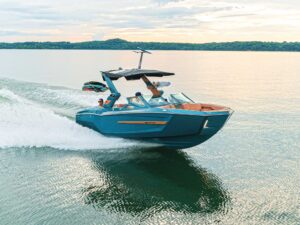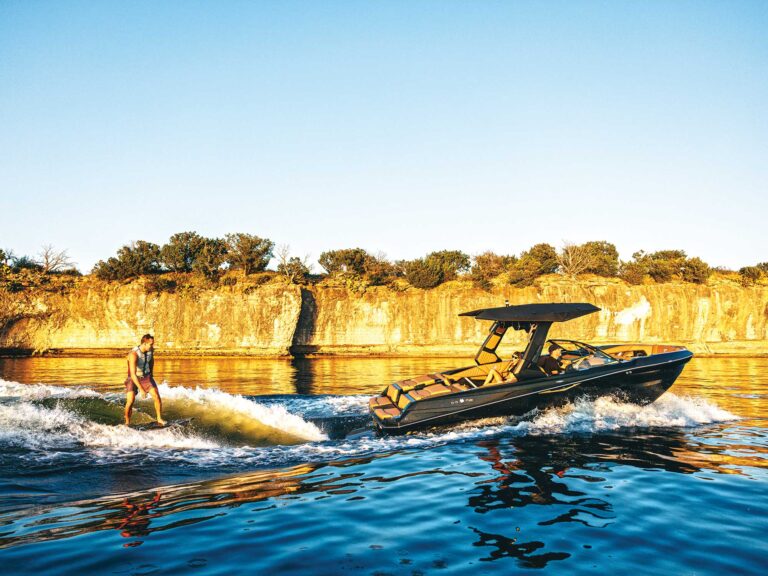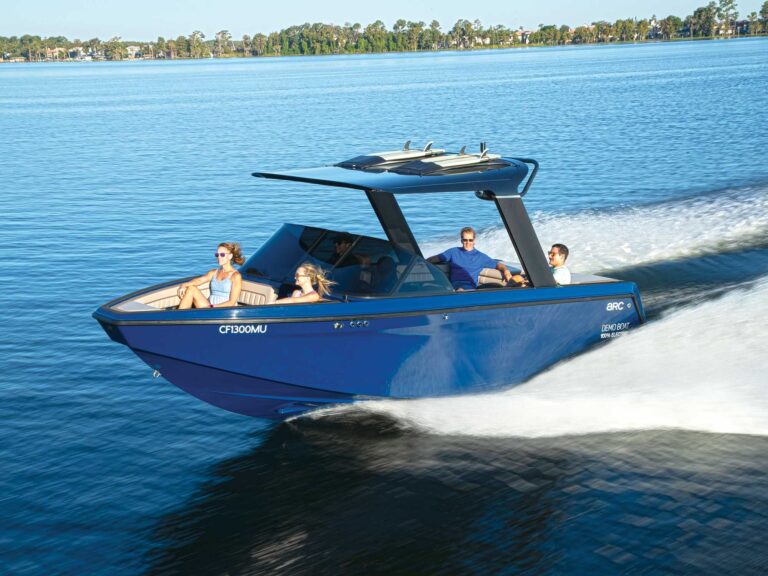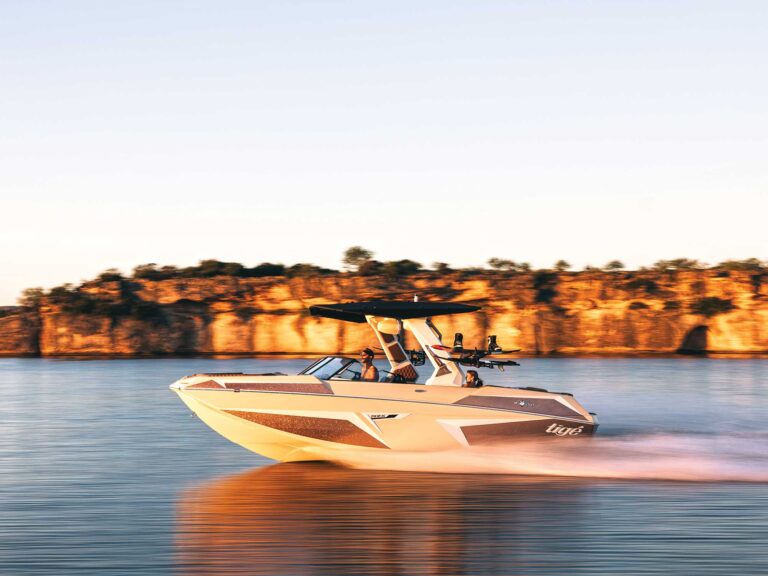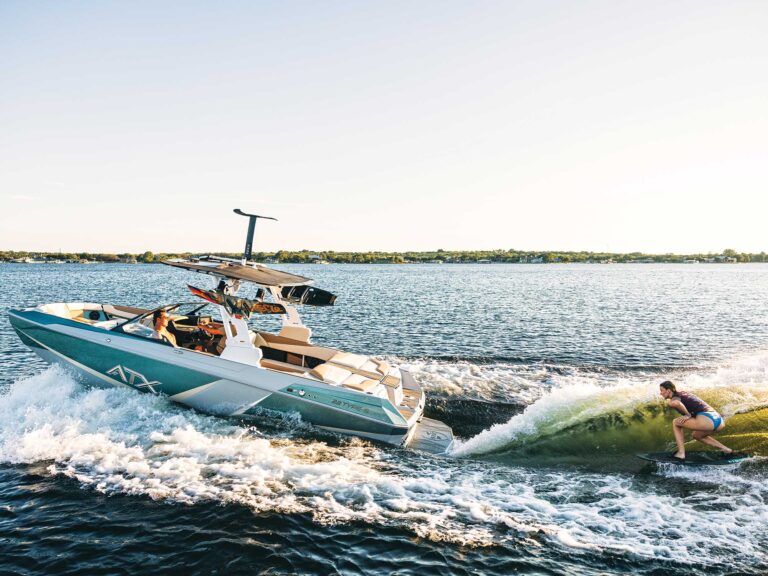
Heading into the 1980s, the War on Drugs, enforcing the new 200-mile fisheries zone, and patrolling for migrants flowing up the Gulf Stream aboard overcrowded, unseaworthy boats and rafts strained both the United States Coast Guard’s law enforcement and lifesaving mandates. On top of that was the ever-increasing duty to tow home those among the country’s 9 million (at the time; it’s now 11.5 million) recreational boats that had simply broken down or run out of gas but weren’t in peril. That changed in fall 1982 when Congress required that commercial tow boats, not the Coast Guard, should assist disabled vessels whenever feasible. Less than a year later, Capt. Joe Frohnhoefer Jr. launched the first Sea Tow operation, which covered the eastern end of Long Island Sound and adjacent Atlantic waters. That new assistance towing industry proved to be a win for both government and boaters. Now, 40 years later, nearly 700 Sea Tow captains operating more than 450 boats serving 500 ports, with another 640 TowBoatUS vessels also on call 24/7, free up Coast Guard resources and budgets for priority programs such as the Coast Guard’s helicopter rescue swimmer program, which has rescued numerous boaters and mariners since its 1984 implementation. And where the Coast Guard’s mission focuses on saving lives, commercial towing operators in bright yellow and red boats also bring equipment, expertise, and willingness to save those stricken vessels.
We’ve highlighted those capabilities within these pages in the past, but these captains provide another, overlooked resource. They’re out on small boats hundreds of days per year to routinely remedy what are often boaters’ most stressful days afloat. Given that unique insight, we asked three Sea Tow captains for tips on simple gear that make boating more comfortable, easier, safer or more enjoyable.

Basic Necessities
“When things aren’t going well, people can get a little nervous,” says Capt. Chris Ward from Sea Tow South Mississippi. Simple comforts can ease those fears. “Food, water and shelter are the essentials. Always have an extra case of bottled water aboard, and some snacks that won’t go bad.” For boats with minimal shade, he says, “a small tarp and a few bungee cords are a $10 investment that can make a long day not so long.” At sunset, bug repellent often becomes important, as does seasick medication aboard drifting or anchored boats. And always bring a 24-hour supply of important medications.

Clothing
“On a 90-degree day, you don’t think you need a long-sleeved shirt or jacket,” Sea Tow Capt. Karl Leinheiser says. But when the boat suddenly won’t start as the sun sinks low, carefree summertime days quickly chill, particularly when a tow home might take a while against the 3-knot current common on the Delaware River, Leinheiser’s home port. Warm cover-ups stored in a waterproof bag are ideal. In a pinch, he says, utilize canvas covers already aboard as makeshift blankets. Always bring shoes too, in case the closest marina isn’t the one from which you departed.
“We Alaskans take our clothing seriously. We use layers. We don’t wear cotton,” says Sea Tow captain Trey Hill, whose home waters in south-central Alaska can quickly turn harsh, or worse. “You don’t have to be in the water to get hypothermia,” he warns. Since cotton no longer insulates once it’s damp, Hill suggests moisture-wicking synthetic base layers along with wool or synthetic outerwear that dries quickly and provides warmth even when wet. “Carry a spare towel and have the ability to change into dry clothing.”
A lightweight rain jacket might suffice for most boaters. In tough Alaskan conditions, Hill prefers bibs and a waterproof jacket suited to the season. “Mustang makes great foul-weather clothing. Its float coats add a layer without a lot of extra bulkiness.” Xtratuf deck boots, uninsulated and worn with merino wool socks, keep Hill’s feet dry and warm.
All three captains recommend polarized sunglasses, which cut glare for comfort and safer operation. Companies such as Bajío and Costa engineer lenses specifically for boating conditions. They also offer prescription lenses and can incorporate readers too. Leinheiser suggests having inexpensive polarized backups and spare prescription glasses or readers as well. “I’ve dropped my fair share of sunglasses into the water,” Hill adds. “Lanyards are a must.”
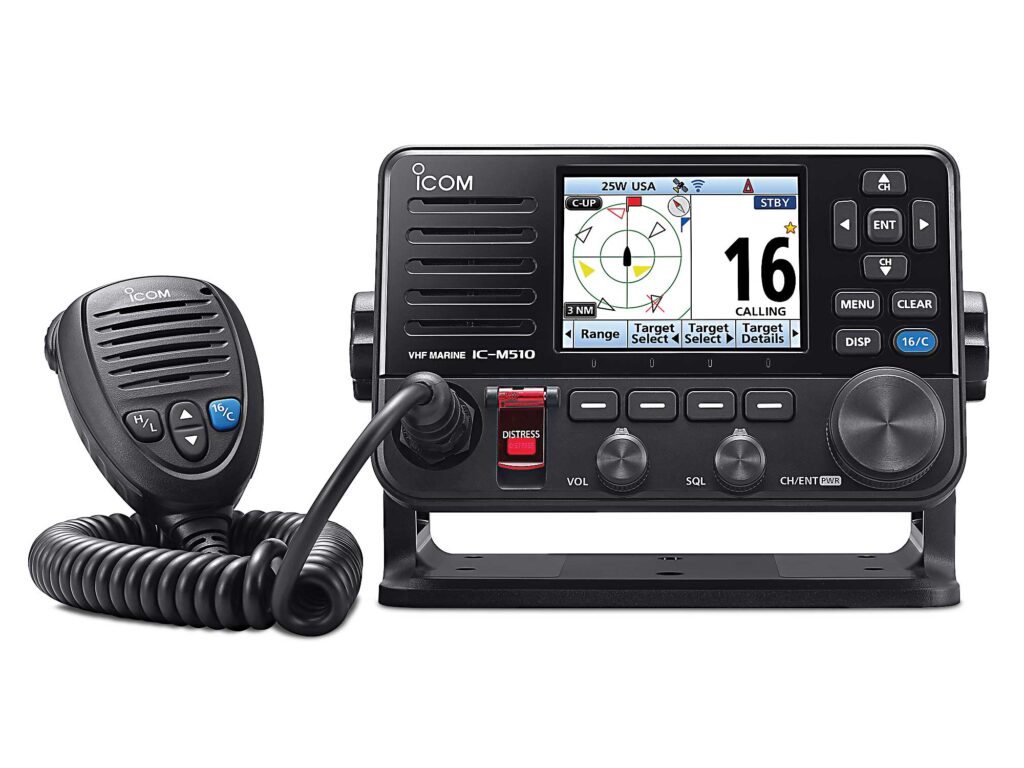
Communication
“You’ve been listening to music, talking on the phone, and all of a sudden, you need Sea Tow’s help, but your phone battery is at 2 percent. You need a way to charge that phone,” Leinheiser warns, even if the boat’s battery is dead. Small, light lithium-powered jump-start battery packs fill two needs—they crank over boat engines, and they include USB ports with oodles of power to charge portable electronics. Charging the jumper pack is simple through USB as well.
“Cellphones have become popular, but VHF radio should be a boater’s No. 1 communication equipment in an emergency,” Ward says. Handhelds from Icom are waterproof, float, and recharge via USB. Icom’s newest, IC-M94D, even incorporates GPS, DSC for emergency calls, and AIS to track other nearby vessels. Know how to find Channel 16 to call for help, and also how to convey latitude and longitude coordinates from the GPS. If those skills are rusty, Ward suggests asking your local Sea Tow captain for a quick refresher. Enrolling in a boater-safety course might be an even better idea.
In Alaska’s less-traveled waters, where topography can block VHF signals, Hill says: “I’m a huge fan of Garmin’s inReach satellite texting devices. They start at $300 for a little handheld unit, and a basic plan is inexpensive. If you’re somewhere with no cellphone coverage and you can’t use the VHF, you can send a text to family or friends who you filed your float plan with.”
Leinheiser also suggests going low-tech. “No one pays attention to the boat’s regular horn, but an inexpensive air horn is loud and gets attention, and you have a backup.”
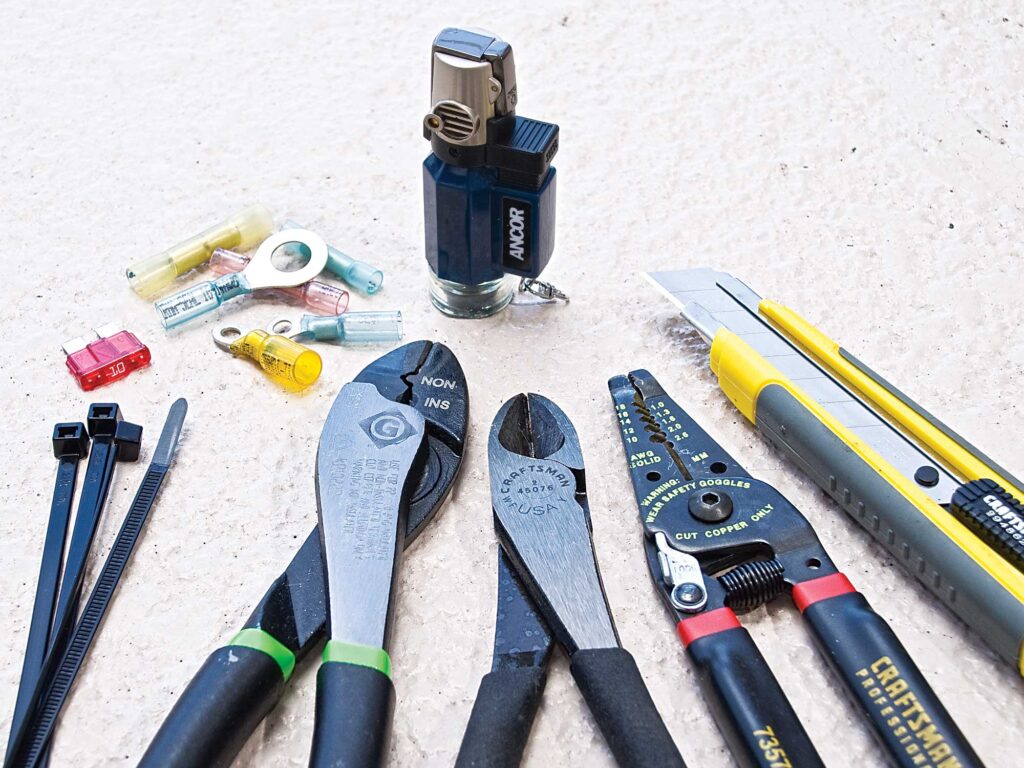
Tools and Spare Parts
“I can often talk people through simple repairs,” Ward says, which can leave boaters much of their day left to enjoy. “But without a few tools and spare parts, you’re just waiting on us to come tow you in.” The short list from the three captains includes a couple of screwdrivers, both needle-nose and adjustable arc-joint pliers (commonly Channel-lock brand), and two adjustable wrenches. Include spare fuses from 2 to 30 amps, assorted-size hose clamps, duct tape, electrical tape and cable ties. Wire strippers, crimpers and crimps facilitate electrical repairs.
While spare fuel-filter elements are essential, they can be tricky to change on a rocking boat, and filter housings sometimes fail. Leinheiser and Ward both suggest having a complete inline fuel filter such as Racor’s Snapp, which is preconfigured with hose barbs. Hill often sees boaters carry spare filters but not the required filter wrenches—he prefers the ones that look like pliers. “They’re much more user-friendly, and they fit a variety of sizes.”
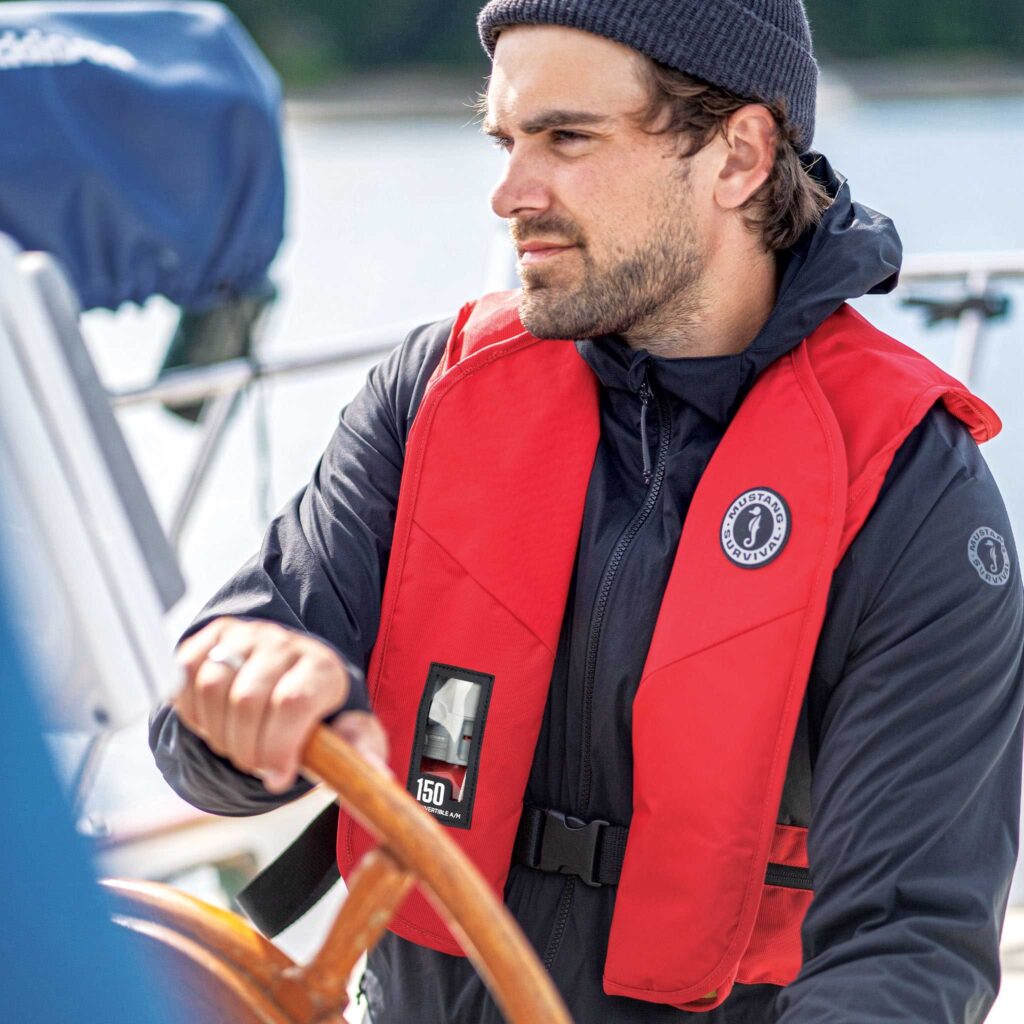
Personal Safety
Coast Guard statistics consistently show that wearing life jackets saves lives. Auto-inflating units are ubiquitous, but Leinheiser often prefers manual inflation. “When I need to go into the water, maybe to wade over to a grounded boat, I don’t want the life jacket to inflate, but it’s there if I need it,” Leinheiser says. Mustang’s newest MIT 150 quickly converts between manual- and auto-inflation modes.
Sea Tow captains typically attach a personal locator beacon right to their life jacket that, when activated, sends an emergency signal and GPS coordinates through a satellite to the Coast Guard. The newest beacons from ACR go a step further, though, by broadcasting an automatic identification system distress marker that shows right on the plotter screen of commercial vessels within a few miles. The inflating action of a life jacket even activates an attached ResQLink AIS PLB automatically.
Most people employed on the water also carry a pocket knife. Leinheiser prefers Spyderco brand, with its serrated blade that cuts rope quickly. “The thumb hole on the blade makes it easy to open with one hand when you can’t let go with the other,” he adds, and that thumb protrusion also fits the slot that opens most fuel- and water-fill deck caps. “It’s bright yellow and easy to find if you drop it,” he points out.
Read Next: Choosing the Right Tools for Boat Repairs

Boat Emergency Equipment
Safety equipment comes down to personal preference. An EPIRB offers the advantage, for example, of automatically deploying and activating if the boat sinks, while a smaller PLB fits right into a pocket. New LED flares offer convenience over traditional flares, but those older pyrotechnics are brighter. Waterproof flashlights come in wide varieties too. All three captains agree, however, that emergency gear should be stored where it is quick to grab, either in a backpack, belt pack or ditch bag. ACR’s smallest ditch bag floats with 15 pounds of gear.
Either install a backup bilge pump or go portable. “Make it self-contained,” Ward suggests, adding that a Rule 1500 pump with 10 feet of discharge hose, connected to 12 feet of wire fitted with battery-terminal clips, stores perfectly in a 3-gallon bucket from a home-improvement store.
Upgraded ground tackle is on all three captains’ equipment lists too. “Your boat broke down, and now you’re drifting toward the rocks or into trouble,” Leinheiser says. “Most anchors that come with the boat are bare minimum and don’t have enough chain. You’ll want to be confident in that anchor.”
“You’ll want at least 6 feet of chain,” Ward echoes, “and at least 3 feet of rode for every foot of water depth to anchor in calm conditions.” Also know how to manually deploy the anchor when batteries are dead or the windlass stops working.
All three captains often see boats without adequate dock lines. If you leave yours at the marina most days, carry a second set aboard. “For a 20- to 26-foot vessel, you need at least four dock lines that are 15 to 20 feet long,” Hill says. “That gives you both bow and stern lines and an option for two spring lines.”
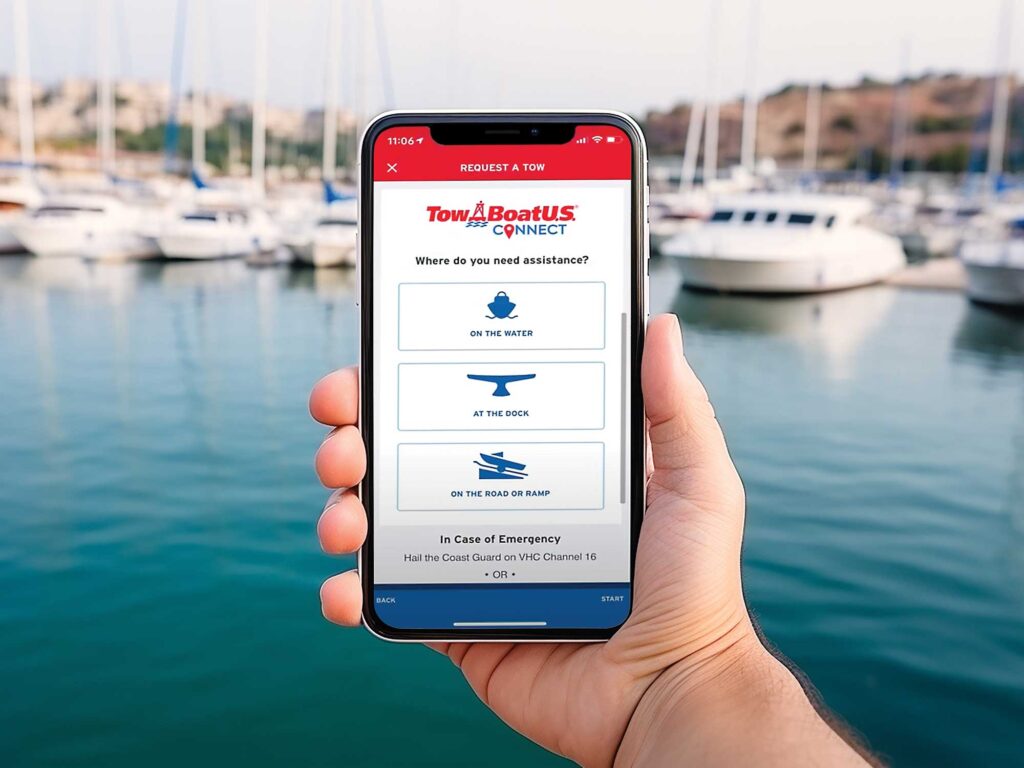
Phone Apps
Sea Tow and TowBoatUS apps help initiate a tow and offer optional location sharing. All three captains also suggest Navionics by name as an app to back up the boat’s navigation equipment. “Get comfortable with it before you need it,” Hill adds.
They all also rely on the red-icon Windy.com weather app (not the blue-icon Windy.app). Hill, in weather-critical Alaska, always checks Marine Weather Forecast Pro as well. “If the two apps don’t agree, I have to pause and reflect on why,” he says.
Leinheiser, particularly for his customers in the heavily trafficked Delaware River, recommends MarineTraffic, which displays AIS-broadcast commercial-vessel information. “If you call a ship or tug by name, they are a lot more likely to respond to you,” he says.
Next time you pass that cheery yellow or red tow boat, take comfort in knowing that they’re there if a day on the water goes awry. But also consider the gear you might want aboard which would make that day a little better.
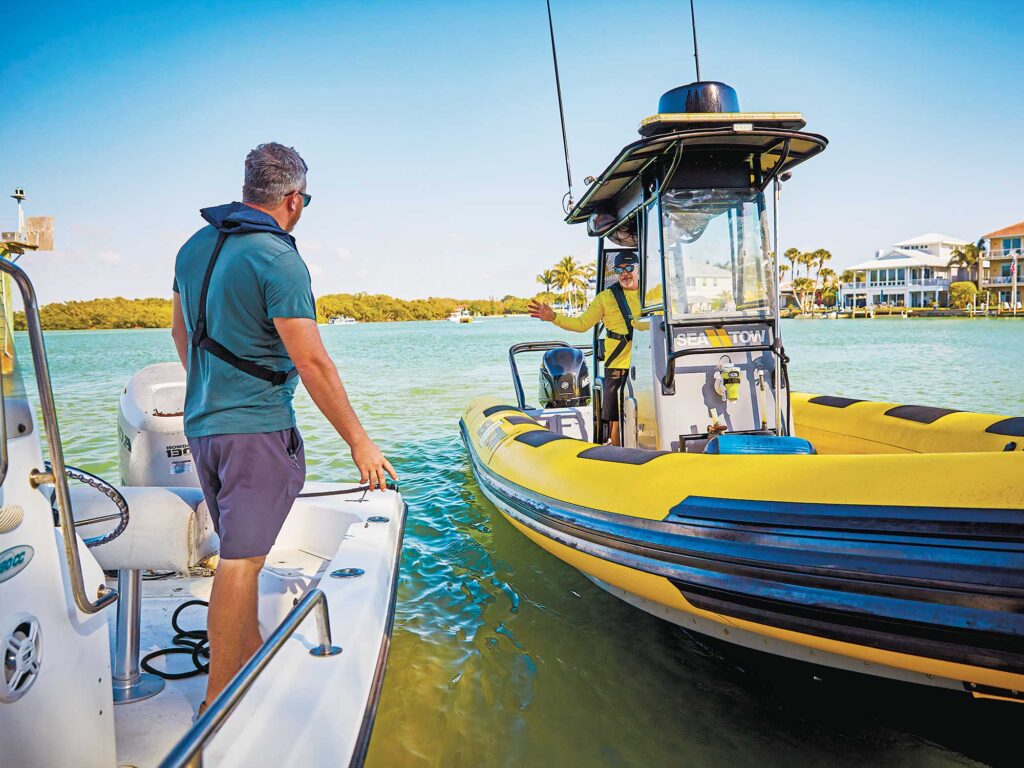
Subscribe
To get better access to all the benefits that a professional towing service can provide, consider subscribing to Sea Tow (seatow.com) or BoatUS (boatus.com). Both services provide not only towing assistance, but they also offer other benefits such as providing fuel, jump-starting a dead battery, providing dock-to-dock towing for service, parts delivery, and more. Do a head-to-head comparison to find out which towing service provides the best benefits for you where you boat.




